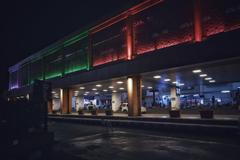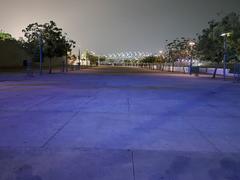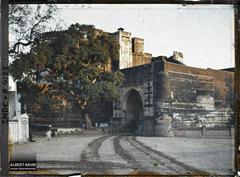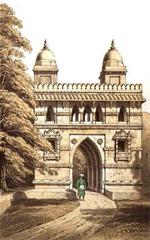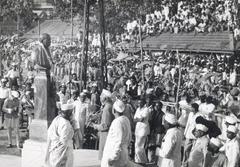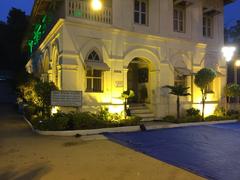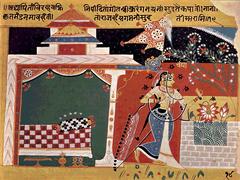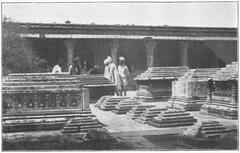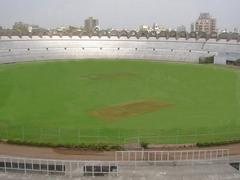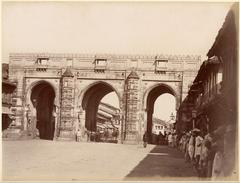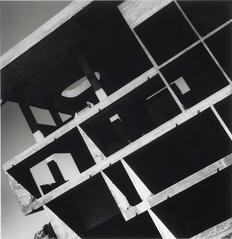Bibiji’s Masjid Ahmedabad: Visiting Hours, Tickets, and Historical Significance
Date: 14/06/2025
Introduction
Bibiji’s Masjid, located in the heart of Ahmedabad, Gujarat, is a distinguished representation of the city’s Indo-Islamic architectural legacy and the impactful role of women in medieval monument patronage. Although overshadowed by more famous sites like Jama Masjid and Sidi Saiyyed Mosque, Bibiji’s Masjid offers a uniquely intimate window into the city’s historical and spiritual tapestry. Constructed in the 15th century under the Gujarat Sultanate, the mosque is believed to have been commissioned by a noblewoman known as Bibiji, highlighting the significant tradition of female patronage in Ahmedabad’s architectural heritage (Tusk Travel, parametric-architecture.com).
This comprehensive guide will cover Bibiji’s Masjid’s visiting hours, ticketing details, accessibility, architectural highlights, historical significance, and practical travel tips to ensure a meaningful and respectful visit.
Table of Contents
- Historical Background
- Visitor Information
- Architectural Highlights
- Preservation & Modern Relevance
- Frequently Asked Questions (FAQs)
- Practical Travel Tips
- Conclusion
- References
Historical Background
Foundation and Patronage
Dating to the early 15th century, Bibiji’s Masjid was established during the thriving period of the Gujarat Sultanate. While exact historical records are scarce, it is widely accepted that the mosque was commissioned by a noblewoman—possibly a royal consort or a woman of high social standing. This tradition of female patronage is also seen in other Ahmedabad landmarks, notably the Rani Sipri Mosque (Tusk Travel).
Architectural Features and Style
Bibiji’s Masjid exemplifies the harmonious blending of Islamic and indigenous Gujarati artistry. Constructed primarily from yellow sandstone, the mosque features intricately carved pillars, elaborate jaali (stone lattice) work, and floral and geometric motifs. The fusion of Islamic and local Hindu design elements is evident throughout the structure, from the mihrab and minbar to the detailed ceiling carvings (Travel + Leisure Asia).
Community and Religious Role
Historically and presently, Bibiji’s Masjid serves as a neighborhood hub for daily prayers, Friday congregations, religious education, and community gatherings. The mosque has played a crucial role in fostering a sense of unity and interfaith harmony in the old city, with local residents from diverse backgrounds participating in its upkeep and communal festivities (theislamicinformation.com, bestinahmedabad.com).
Visitor Information
Visiting Hours
- General Timings: Bibiji’s Masjid is typically open from 5:30 AM to 9:00 PM daily, aligning with prayer schedules (Forever Muslim).
- Recommended Visiting Times: Early mornings or late afternoons are ideal to avoid crowds and the midday heat. Visitors should avoid visiting during the five daily prayers and especially Friday midday Jumu’ah unless they wish to participate in congregational prayers.
Tickets & Entry
- Entry Fee: Free for all visitors. Donations for maintenance are welcome.
- Tickets: No advance booking or tickets required.
Accessibility
- The mosque is located in the Rajpur Hirpur area, accessible by city buses, auto-rickshaws, taxis, and app-based cabs.
- The closest major transport hub is Sardar Vallabhbhai Patel International Airport, about 8–10 km away.
- The old city’s narrow lanes may pose challenges for wheelchair users or visitors with mobility issues. Assistance can be arranged through local guides or with advance notice.
Dress Code & Etiquette
- Dress Modestly: Cover shoulders, arms, and knees. Women should carry a scarf to cover their heads.
- Footwear: Remove shoes before entering prayer areas. Shoe racks are provided.
- Conduct: Maintain silence, respect worshippers’ privacy, and avoid disruptive behavior.
- Photography: Allowed in exterior and courtyard areas; ask permission before photographing inside, especially during prayers.
Guided Tours & Photography
- Guided Tours: No official tours are offered, but knowledgeable local guides are often available nearby.
- Photography: The mosque’s intricate exteriors and courtyard offer excellent photo opportunities. Always seek permission before photographing inside the prayer hall.
Nearby Attractions
- Jhulta Minar (Shaking Minarets): Renowned for their unique vibration effect (ahmedabadtourism.in).
- Jama Masjid: An architectural marvel of the 15th century.
- Sidi Saiyyed Mosque: Famous for its stone lattice windows.
- Sabarmati Ashram: Gandhi’s historic residence.
- Manek Chowk: A lively market for food and shopping.
Architectural Highlights
Layout & Design
- Plan: Rectangular, with a spacious east-facing courtyard and a grand central gateway flanked by two minarets (Yappe.in).
- Prayer Hall: Supported by multiple stone pillars, dividing the space into aisles and creating a rhythmic interior.
The “Jhulta Minar” Phenomenon
- Bibiji’s Masjid features minarets that can “shake” or vibrate in tandem when one is moved—an engineering marvel also seen at other mosques in Ahmedabad (Wanderlog).
Decorative Elements
- Material: Locally sourced sandstone.
- Motifs: Floral designs, geometric patterns, and Islamic calligraphy, blending Islamic and local styles.
- Light & Space: Jaali screens filter natural light, creating a serene atmosphere.
- Tomb of Bibiji: Adjacent to the mosque, symbolizing humility and reverence.
Preservation & Modern Relevance
- Bibiji’s Masjid remains an active place of worship and community engagement, maintained through local efforts and municipal support. Its inclusion in Ahmedabad’s UNESCO World Heritage City designation in 2017 underscores its cultural and historical importance (Wanderlog).
- Conservation efforts are ongoing, though challenges persist due to urban pressures and the need for regular upkeep (Yappe.in).
Frequently Asked Questions (FAQs)
Q: What are the visiting hours for Bibiji’s Masjid?
A: The mosque is open daily from 5:30 AM to 9:00 PM.
Q: Is there an entry fee?
A: No, entry is free for all visitors.
Q: Are guided tours available?
A: No official tours, but local guides may be available nearby.
Q: Is Bibiji’s Masjid accessible for differently-abled visitors?
A: Accessibility is limited due to narrow lanes and steps; assistance is advised.
Q: Is photography allowed?
A: Yes, in exterior and courtyard spaces. Seek permission for interior photography.
Q: What is the best time to visit?
A: Early mornings or late afternoons for comfort and peaceful exploration.
Practical Travel Tips
- Carry Water: Especially in hot weather.
- Wear Comfortable Shoes: For walking on uneven surfaces and easy removal.
- Respect Local Customs: Dress modestly, maintain silence during prayers, and follow mosque etiquette.
- Language: Hindi and Urdu are commonly spoken; translation apps may be helpful.
- Nearby Amenities: Restaurants, accommodation, and markets are within a 2–5 km radius.
- Safety: The area is generally safe, but always keep personal belongings secure.
Conclusion
Bibiji’s Masjid is a remarkable yet often overlooked gem among Ahmedabad’s historical sites. Its architectural elegance, historical resonance, and unique community role make it a must-visit for travelers seeking a deeper understanding of the city’s heritage. By respecting mosque etiquette and planning your visit with the practical information provided, you can enjoy a rewarding and culturally enriching experience.
For up-to-date information, detailed maps, and immersive audio guides, download the Audiala app and follow official tourism channels. Extend your exploration to nearby landmarks like Jama Masjid, Sidi Saiyyed Mosque, and Manek Chowk to fully appreciate Ahmedabad’s rich historical and cultural landscape.
References
- Tusk Travel – Best Historical Places in Ahmedabad
- Parametric Architecture – Ahmedabad City Guide
- Forever Muslim – Bibiji Masjid Ahmedabad
- HalalTrip – Bibiji’s Mosque
- Gujarat Expert – Historical Places in Ahmedabad
- Wanderlog – Most Historic Buildings and Sites in Ahmedabad
- Yappe.in – Bibiji’s Masjid Ahmedabad
- Best in Ahmedabad – Ahmedabad Tourist Guide
- Travel + Leisure Asia – Historical Places in Ahmedabad
- The Islamic Information – Mosque Etiquette
- Ahmedabadtourism.in – Sidi Bashir Mosque Jhulta Minar
